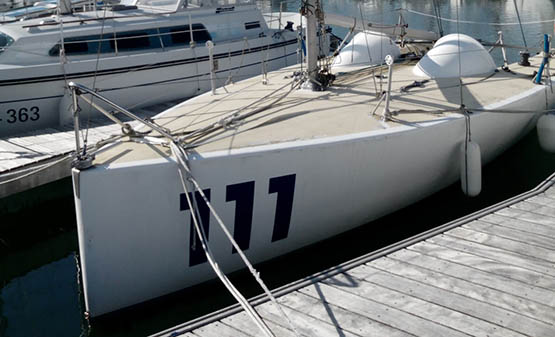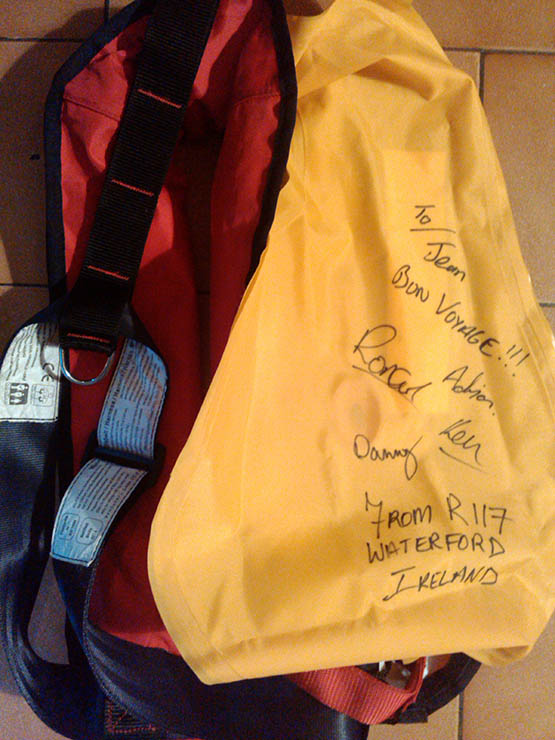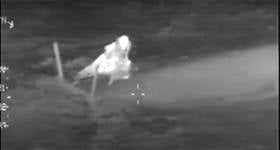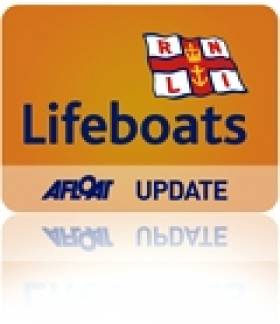Displaying items by tag: 117
For many Afloat.ie readers, he was just a silhouetted figure sitting atop a boat waiting to be rescued when Afloat.ie published the story about a solo sailor's rescue off the Wexford coast. Like so many rescue video clips, there was little detail on what had caused the boat to capsize but French skipper Jean Conchaudron's subsequent thank you comment on Afloat.ie to the Irish rescue services shed a lot more light on his remarkable rescue from the Irish Sea.
Conchaudron was voyaging from Newlin, Cornwall to Dublin. His goal was to meet a friend who was coming to Dublin from Iceland. After a few days holidaying in Dublin they would come back with the two boats to Brittany (Perros Guirec).
 Jean Conchaudron's Mini 6.50 in happier times
Jean Conchaudron's Mini 6.50 in happier times
But as we now know, none of this ever happened. As a result of 'mechanical failure' Conchaudron's keel fell off and he was capsized in seconds.
'Conditions were quite good, I was on deck, wind was about 15 knots, some swell. The boat capsized in about five seconds'.
'I had my PLB in my trousers, and my life jacket on. I triggered the PLB I have in my pocket. It then took to me about half an hour to be able to make a web of ropes to climb on to the hull, I was pushed up and down by the waves, and it took me a while to secure myself with the rope (the web of rope can be seen on the video). It was not possible to start my boat beacon because it was in the cabin and not accessible.
'I then waited to be rescued. The Rescue 117 Helicopter from Waterford saved me and I spent four days in Waterford Regional Hospital due to hypothermia. Thanks to the Irish recsue services, these guys are heroes'.
Conchaudron says he loves Mini 6.50 type sailing and prefers sailing alone. Despite what happened off Wexford, he believes his boat is 'very safe' and well equipped, as are all the boats of this class with a radio beacon and other safety measures. He participated in the "Mini Transat" in 1987, and other races in France.
 Jean Conchaudron's all important lifejacket signed by his rescuers
Jean Conchaudron's all important lifejacket signed by his rescuers
As far as he knows, the boat is still adrift in the Irish Sea. Conchaudron says the Coastguard is 'keeping an eye on it.' It is his intention to try to get it back, depending on what his insurers say.
'I hope this experience will help other sailors', he wrote on the Rescue 117 Facebook page.
Conchaudron says he has learned an important lesson from the experience and wants to pass it on to other sailors in the hope that it can save other lives at sea: 'Have a PLB in your trousers's pocket, wear your life–jacket, stay afloat, don't sleep and be a warrior to survive'.
Ballycotton Lifeboat Launches for Pleasure Craft in Choppy Seas
Ballycotton RNLI lifeboat was launched at 12:10 today for a pleasure craft in the Ballycotton Bay area of East Cork.
No contact had been made with the lone sailor for over an hour and his concerned family contacted the Coast Guard.
Sea conditions in the area was choppy at the time, with the wind blowing North East force 6/7.
The Ballycotton RNLI lifeboat, Austin Lidbury, were requested to launch, as were the Ballycotton Coast Guard unit and the Waterford based Coast Guard helicopter, Rescue 117.
The pleasure craft returned safely to shore under its own power shortly afterwards and the emergency units were stood down.
Related Safety posts
RNLI Lifeboats in Ireland
Safety News
Rescue News from RNLI Lifeboats in Ireland
Coast Guard News from Ireland
Water Safety News from Ireland
Marine Casualty Investigation Board News
Marine Warnings

























































